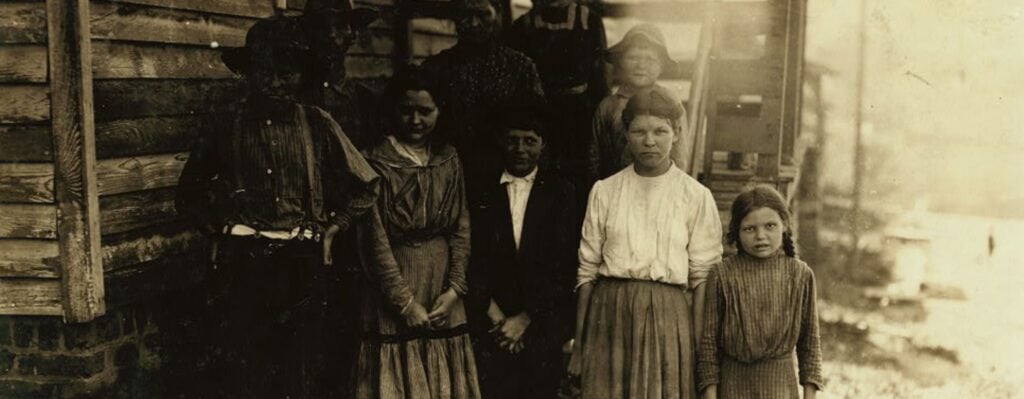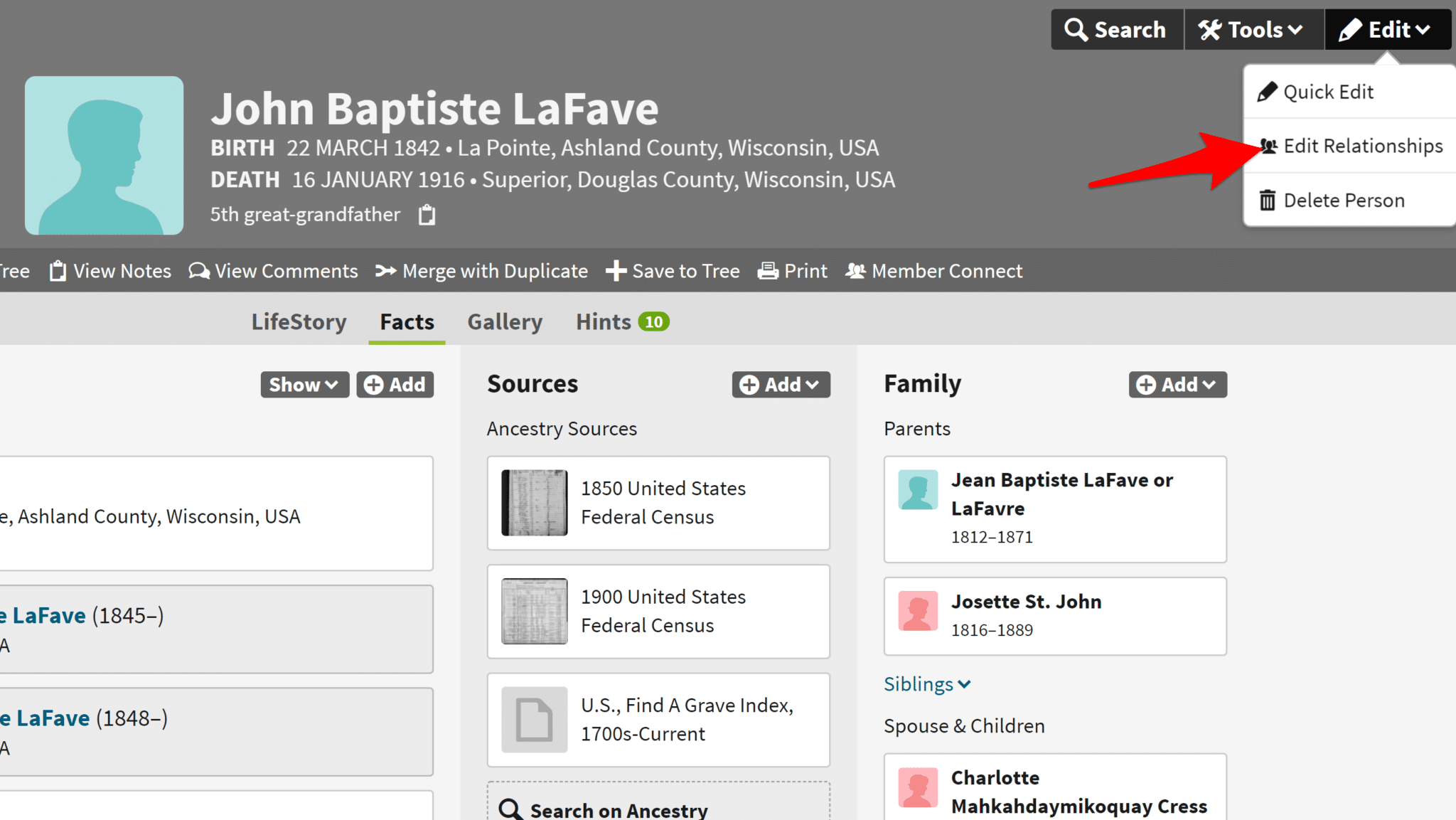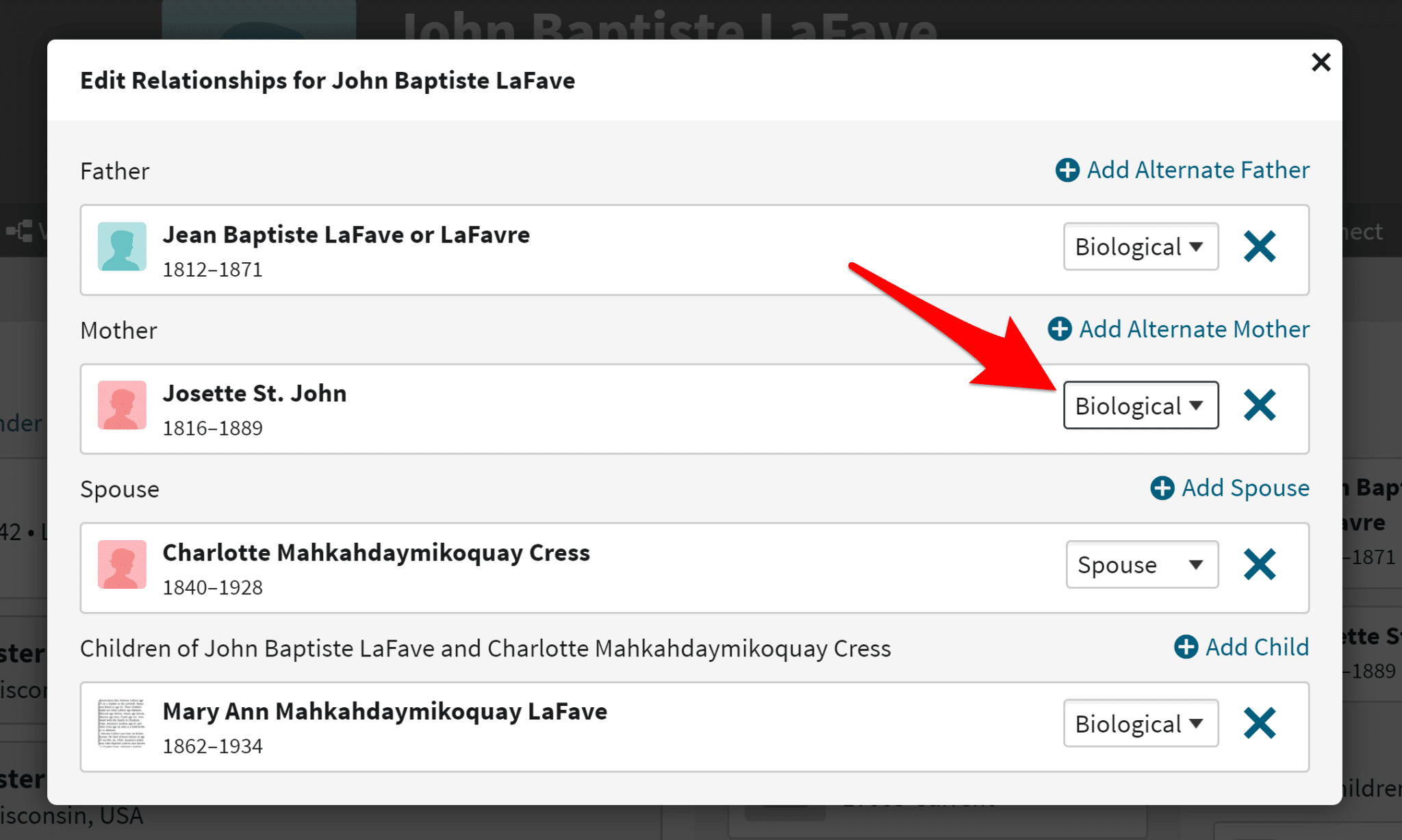The term family tree is defined as “a diagram showing the relationships between people in several generations of a family.” Add your parents, grandparents and great grandparents and you’re well on your way to building your own tree.
But, as we all know, family is an incredibly complex concept with biological, legal, social and emotional elements. And, for this reason, the question of who counts as family in a family tree is far from simple.
In our daily lives, family often has less to do with biological or legal connections and more to do with personal relationships. Those people who are intimate parts of our lives, who we love and care for, who care for us, are our family. What makes a mother, father, sibling, child, grandchild is seldom straightforward.
But in a genealogical sense people often get muddled and are unsure who should be added to their family tree. Adoptions, step-parent relationships, unmarried partners, multiple marriages, the discovery that a parent or sibling is not related biologically – all of these scenarios may cause some serious head scratching.
And even if we don’t experience any of these instances in our immediate lives, most of us will encounter them as we dig deeper into our family’s past, leading us to ask:
“What constitutes family in a family tree?”
“Who should I add and who should I leave out?”
To answer these questions we have to ask ourselves another, “What is the purpose of a family tree?” Is it to lay out a biological map of our past, or to tell as accurate a story as possible about the lives of our ancestors?
There are very few who would argue that the purpose of genealogy is to simply understand the biological connections of humans. After all, family history researchers spend much of their time digging through old records and histories – social documents – trying to better understand the realities of those they are researching. This work makes it incredibly apparent that family is much more complex than a bloodline.
Yet most of us feel a need to create a tree that tells a biological story – a physical record of what we are made of in an attempt to understand our ancestors and ourselves.
But if family is more than biology, and it is family that shapes us, than shouldn’t our trees be more than biological record books? If we create a tree that reflects only physical relationships are we really building an accurate picture of our ancestors’ lives?
If we want to develop a full and accurate picture of our family’s past we need to document everything we can about the lives that created it – and that includes taking the time to discover and include non biological relationships. We need to tell the very complex story that is family, generation after generation, if we want to understand where we come from.
In a previous article we discussed the importance of adding non direct-line relatives to a family tree – such as aunts, uncles and cousins – to form a well-rounded family history. And this scenario is no different. Our trees should be filled with those people that our ancestors considered family – no matter their biological or legal relationship.
A first marriage of great grandmother Jeanie for instance – even if it didn’t produce any children – had a huge impact on her life, as did the unofficial stepfather of your grandfather. He may not be biologically or legally related but he surely influenced the kind of man your grandfather became and the lessons he passed on to you.
And adding these relationships to your tree will help you uncover new records about your family’s past as you branch out and create new pathways for discovery.
Of course, only you can decide who should appear in your own family tree – but when you do you should always take the time to properly document the relationships so that others know exactly what they are looking at.
A stepmother for instance, even if she is the only listed mother, should be labeled as such. This will ensure that future generations will have an accurate view of the past and other family historians will have the details they need to build on your research.
Almost every family tree program makes adding multiple spouses to a person and non biological relationships for a child possible. Look in the help documentation in whatever program you are using for help.
Here is a quick walk through for how to edit relationships and add more that one partner/spouse on Ancestry. Links to how to edit relationships on MyHeritage and RootsFinder are found below.
To edit relationships in an Ancestry tree simply view the profile of one of the people in the relationship. Now click on the Edit button in the upper right hand corner of the page and select Edit Relationships.
Once on the Edit Relationships screen you will see that each person has a dropdown box of relationship possibilities. Click on the box and select an option.
For a parent or child you can choose:
- Adopted
- Step
- Foster
- Related
- Guardian
- Private
- Unknown
For a spouse/partner you have the option of:
- Spouse
- Partner
- Friend
- Single
- Other
- Unknown
On this screen you can also add additional partners and children quite easily, including adding a child from another marriage/relationship. To do this simply add a child and choose from parental options at the bottom of the screen.
- MyHeritage has several articles relating to this topic – including adding adopted children and partners – in their help center.
- RootsFinder information on editing relationships is here. Read our intro and how-to on using their free online tree here.
Also read: Are You Making the Direct-Line Mistake in Your Family Tree?
By Melanie Mayo-Laakso, Family History Daily Editor
Image: “Family of J. J. Moore. All but mother and two smallest children on steps work in Washington Cotton Mills, Fries Va. Smallest spinner (right hand end of front row) said she was 14, but she surely is not. The family came from a Carolina farm three years ago. Location: Fries, Virginia.” May, 1911. Library of Congress.



> Why does an ex spouse of a childless marriage have to be included in a family tree?
A few reasons: First, as mentioned in the post, they may have influenced the next spouse that did have children. Second, it provides additional insight into where you can find records of your relative, e.g. where they got married might be where they lived. Third, records you find about this childless spouse might provide some clues about your relative. E.g, if you don’t know when and where that relative was born and you don’t know much about that from their parents or siblings, perhaps knowing when and where the childless spouse was born can provide a clue.
Of course it’s up to you whether or not to include that person. If you don’t have much info beyond just a name you _could_ just leave their name as a footnote somewhere. But that makes it harder to research your relative in case there actually are records with that person or if (gasp) that childless spouse did not end up being childless after all.
Why does an ex spouse of a childless marriage have to be included in a family tree? They have no bioligical connection to the family.My family wants to include this person and I’m very opposed !
Is my brothers wife’s children related to me.
You should be GRATEFUL your ex is willing to share family history with you! He doesn’t have to. How bitter can a person be?
I want to know what gives you the right to send my EX-HUSBAND all my personal family history. I am sick of him sending me things like a picture of my Grandparents graves, etc.. It is none of his business who is on my family tree!
It is very intrusive to me and I am trying to find out if it is even legal!
In this case I list the parents under the birth notation giving their life span if available. ei Parents John William Jones [1891-1950] + Alice Smith [1895-1945]. Also note especially in small communities more than one offspring of the above parents could have married into the same blood-line.
In my experience living persons are marked as private listing no name – date of birth or any other info
Please respect the request of relatives to be left off to protect their privacy. I for one do not want my name and especially dob on anyone’s family tree.
List as much information as possible. Step’s, half’s, spouses and their families if discovered labeling with relationship. This practice has led me to “find” much information. Including, 2 boys and 1girl; the boys couldn’t be located when grandpa’s will was probated in the 1890’s.
The practice has also led to many discoveries I have found no where else.
My advice is “always include” …you never know what discoveries the information will lead you to down the road.
We have many loving men in our family who have raised other mens’ children. This question came up every so often, especially as my husband adopted my children, and raised them from ages 1 and 4. I talked about their father in everyday conversations, both good and bad things, but after we split he stayed away so as not to confuse them.
My children know their blood relatives, but have a closer relation with hubby’s family.
\We came up with this simple little rule that so far seems to make everyone happy:
List the stepfather as “step” or “adoptive” or whatever, right along with the “bio” father. Do a full profile on both fathers. Both are important, as stated above.
Then think about your relationships with stepfather’s family, being sure to ask the children involved the tree is, after all, for them. Decide which step relatives have close relationships with your children: do they see each other at Thanksgiving, go on vacation together, friends on facebook, and so on. If the step relative is known, include them. If not, leave them off. They have their own tree if you want to look for further information. So on our tree, we included stepfather’s siblings and their families, parents, grandmothers and a few of his aunts and uncles. Each case is different, but the rule’s always the same, and it seem to cover what’s important.
I don’t add parents of a uncle/aunt by marriage because you are researching a whole different family then. I add all husbands, wives, children & stepchildren, but I only add siblings of my biological line & their spouses, children. It’s confusing enough without going off in other directions! One dna match of mine was adding the grandfather of his brothers wife!
It’s the old nurture or nature question that constantly comes up in psychology. It is all part of our story. For me, I’d rather study the complex, nuanced reality, than only consider the clinically biological.